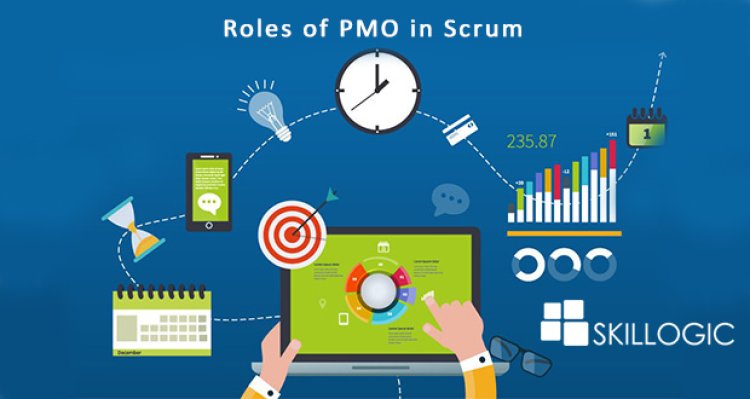What are the Roles of the Project Management Office in Scrum?
Discover the key roles of the Project Management Office (PMO) in a Scrum environment and how it supports Agile teams. Learn how the PMO aligns strategic goals with Scrum practices for successful project delivery.

The complex projects are no more complex with this Agile Framework “Scrum”. Being deceptively simple is the biggest advantage of Scrum and also the main reason for many organisations adopting it. If you want to divide the Scrum’s responsibilities, it gets scattered between Scrum master, Product owner, and the team, leaving behind the biggest question of the role of Project Managers. No Worries, PMO’s are going to take up new responsibilities covering three main areas People, Projects, and Process.
The Project Management Office and People:
Scrum is an evolving concept that needs a ray of light to be shining on it. An Agile PMO can tremendously influence the people to make effective Scrum transition, here is the list of what they can do
1) The PMO can effectively select the trainers and set up training programs or even can deliver training by themselves.
2) When the members of PMO equip themselves with deep knowledge in Scrum from an industry recognised service providers such as SKILLOGIC™, they can coach as well as help the team effectively implement the skills that they have learned in Scrum training.
3) PMO can identify the teams adhering to old practices, remind and help them to get into a scrum routine.
4) A successful Scrum implementation will not get over with the initial coaching alone but eventually, needs more coaching needs. The members of PMO can identify and develop coaches from the scrum team who can take up additional responsibilities of assisting the team.
The Project Management Office and Projects:
PMO’s responsibility with respect to Projects is divided as two, the ones that fade away with the change to an Agile environment whereas the other that remains even after the transition.
1) There are many standards such as ISO 9001 or even an organization’s specific rules that a project needs to comply with. An Agile PMO can initiate an awareness on these and how to comply them.
2) Most of the organisations have weekly report or meeting regarding the status of each project to discuss with the head of the team. This meeting is attended by appropriate personnel such as Scrum master or product owner. PMO can take up the role of assisting them in preparing the weekly standardised status report.
3) Limiting the work capacity and resisting the temptation to start projects quickly is an important responsibility that an Agile PMO can look into.
The Project Management Office and Process:
The process related activities are huge for PMOs and they need to work closely with the organisation’s Scrum masters for an effective Scrum implementation.
1) Identifying and collecting metrics is an important task that can be taken up by a PMO but needs a cautious work since the Scrum teams are already good at it.
2) Reducing the activities that are not adding value to the project is another task that an Agile PMO can look into.
3) Exposure to different teams helps PMO members to gain a better visibility towards team coordination and hence they can alert teams when they start to diverge or overlap. In fact, PMOs can work effectively with different groups such as Human resources, facilities, and explain and eliminate the influential factors for a better outcome.
4) Formation of communities can help Scrum as well as good ideas to spread better. Encouraging the community formation and supporting them is an important task that can be taken up by an Agile PMO.
5) Being the most powerful tool, PMO’s doesn’t want to miss opportunities to effectively plan their project management framework using it.
6) In rare scenarios, Tool decisions can sometimes be made by PMO members.
For SKILLOGIC™ SCRUM Master training details, please visit: https://skillogic.com/scrum-master-training/csm-certification-bangalore/

0
96189